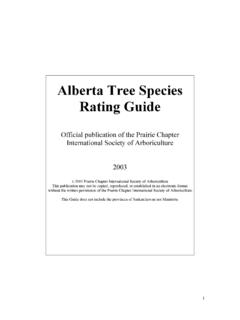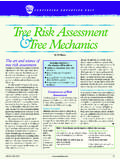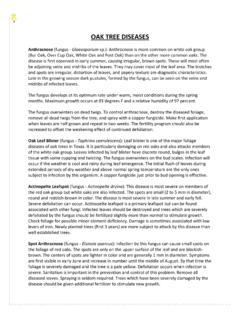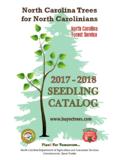Transcription of Children’s tree swings - Monkey do
1 AA gguuiiddee ttoo ggoooodd pprraaccttiicceeCChhiillddrreenn ss ttrreeee sswwiinnggssProduced by London Play | Written by Monkey -Do | Part-funded from the National Lottery by Natural England IInnttrroodduuccttiioonnWelcome to this good practice guide to the safe siting, installation anduse of children s rope swings in trees. The guide is intended to helpoutdoor playworkers to manage the risks - and benefits - associatedwith rope swings , and to provide practical advice on how to install them play equipment in artificial play areas is subject to the EN1176 Playground Equipment Standard and the EN1177 Playground SurfacesStandard. These standards do not provide appropriate guidance fortemporary play structures in wild spaces however. Such environmentsinevitably contain many physical features that have not been designedwith safety in mind, as well as other risk variables that are beyond anyreasonable expectation of direct human control. The fact that a spacehas not been designed with children s safety in mind does not necessarily mean it is unsuitable for play, but a culture of risk aversionin play provision can lead to this assumption.
2 There is now a growingrecognition that risk must be properly balanced against the benefits ofaccess to play in such wild spaces - particularly adventurous play, orplay that is perceived as risky - which can make an invaluable contribution to children s wellbeing and guidance in this document relates only to swings installed in natural spaces on a temporary basis. It is not a hard and fast set ofrules, and neither is it exhaustive. Natural play environments are subject to too many factors that influence risk in different ways to covercomprehensively in a short document such as this. We have sought toadvise on the appropriate management of the most significant andfrequent of the risk factors likely to be encountered, so that thoseinvolved in the risk management of play provision in wild spaces can be confident that good practice is being document has been prepared by Monkey -Do in association with London Play. Monkey -Do is a social enterprise with over ten yearsexperience installing temporary play structures in natural aim to provide adventure play experiences for those who lackopportunities for active play in a natural environment, and to increaseaccess to the amenity value of parks and woodlands in the UK.
3 LondonPlay is a charity that aims for every child in London to have quality,accessible and inclusive play opportunities. We campaign for more andimproved play spaces and services, and support playwork in the capital. The guide has been part-funded by Natural England, under their Accessto Nature programme with funding from the National aa ssiitteeThe primary criteria for a successful rope swing site are simple and intuitive: look for alarge tree with a high limb to attach to and a swing zone that is clear of , good practice demands consideration of a number of other important factors. TTrreeee ssppeecciieess ttoo uusseeThe structural properties of living trees vary greatly between different species, meaningsome types of tree make much better candidates for rope swings than others. Thesame thickness of branch that could offer a perfectly secure anchor point in one speciesmight be dangerously unsound in another. Table 1 is a guide to the commonly encountered tree species in the UK that are likelyto offer the most appropriate supports, and which are best avoided.
4 Confident identifi-cation of tree species is essential. Refer to a field guide or visit you are uncertain. Table 1: A brief guide to the suitability of common tree species for rope old or prominent trees of any species should be protected in order toconserve heritage, amenity, or ecology and so it is advised that such trees are patch of bare earth can form under swings created by feet scuffing the floor and sosupervisors should consider if this will be acceptable with the site aasssseessssmmeennttA tree assessment must be carried out from ground level prior to any climbing of treeson a site. Where practicable this should then be followed by a climbing inspection tocheck the limb that will be used to support the rope swing (from a ladder or rope andharness as appropriate). It is preferable to look at the candidate limb from above as wellas below as some structural defects may not be visible from ground level. If a climbinginspection is not possible, it will be necessary to test the anchor limb more exhaustive-ly before using the swing ; please see the section of this guide on installing a swing fromground level for more on testing.
5 Do not carry out a climbing inspection without theappropriate tree species and their suitability for rope swingsGoodOnly when limbs are large andthe tree is in good conditionAvoidBeechAshFirHornbeamCedarLa rchLondon planeCherryPineNorway mapleHorse chestnutPoplarOakLimeSilver birchSycamoreSweet chestnutSpruceWillowTrees strive for uniform stress distribution over their surface. If this is disturbed bylocally high stresses, then the tree will lay down thicker annual rings at this , if it is under-loaded, it will make less annual increments. The form of a treeis thus an indication of its structural condition, the so-called body language of trees .For these reasons visual tree assessment (VTA) is an appropriate and widespreadmethod of tree diagnosisii. The use of VTA when considering installing a rope swing isdiscussed below: !Look for cracks, splits, bulges and unusual swelling as these often indicate bio-mechanical tree defects. Frequently these are not particularly significant, althoughin some cases they leave the tree liable to limb failure.
6 !Look out for fungal fruiting bodies and decay. Knocking a tree with a hammer(sounding) can help reveal the extent of hollows or decay. Dead branches at theends of limbs are a sign of decay or infection. Obviously limbs with extensive decayor cavities should not be used to support a rope swing .!Look at the point where the branch forks from the main stem or larger limb. If thereis a seam, crack or ears at this point this indicates that the annual rings are notwelded and the limb is at risk of tearing out. Limbs with these weak fork unionsshould not be used to support rope swings .!Trees that have always grown with a lean should have adapted their growth tocompensate and so, in the absence of any structural defects, are likely to be asstrong as upright trees. However, trees that appear to have had recent rootplatemovement should not be climbed or used for a rope swing .!Any dead or hanging branches above the swing and areas of activity should beremoved or stabilised. Using the swing is likely to dislodge any loose material in thecrown that has not been removed or made safe in findings of the tree assessment should inform your decision of whether the tree issuitable for a rope swing or not.
7 You should record that you have made a tree assess-ment and your conclusion as part of your risk/benefit terrain around the swing site can make a huge difference to the relative risk tousers, as falls from the swing should be expected. EN1176 governs the provision ofsafety surfacing materials in artificial playgrounds, but rope swing installations in wildenvironments must work with the surfaces nature surfaces such as concrete, tarmac or gravel SuitableGrass or bare earth and leaf litter typical of woodland floorsCareful judgement should be used when installing swings over unsurfaced naturalpathways that experience very heavy pedestrian traffic as the earth here may becomecompacted, forming a surface that can be almost as hard as fall zone of the swing site extends up to approximately in every directionfrom a potential swing s maximum reach when in use, and should be free from additionalhazards such as rocks and other trees. Inspect the fall zone and remove any hazardousobjects.
8 If hard tree stumps or large areas ofexposed roots or rock are present in the fall zoneand cannot be removed or made safe, the site is notsuitable for a tree swing . If the support tree or neigh-bouring trees have any small branches that arewithin the swing s reach, these should be carefullypruned out of range. Sites with steep gradients can be more attractive aspotential swing sites; they can also be morehazardous. The maximum fall distance from swingseat to ground must not exceed 3m at the swing slikely highest point above the downward slope. Siteswhere the fall distance is greater than 3m are unsuit-able for tree swings , and a less-than 2m maximumfall height is preferable. If users falling from theswing are likely to continue falling further down theslope after making contact with the ground, then thefall zone should be considered to extend as far asthe nearest level ground, and the terrain considera-tions outlined above apply to this whole area. WWaatteerrLimbs of trees overhanging water can be excellentsites for swings , but such sites present their own setof risks.
9 An assessment of their suitability shouldanswer the following questions:1 How deep is the water?2 Are both the bank and the bed of the river/poolfree from hazards such as sharp rocks, logs, branches or other hazardous material?3Is there an obvious clear exit from the river a place without steep sides that caneasily be climbed?4Is the river/pool free from adverse currents?If the water is deep enough to swim in then there is a clear risk of drowning, and the swingshould not be used without supervision from a strong swimmer with a buoyancy see RoSPA s information sheet on water safety for children and young : The following guidance is principally directed toward single-rope swing systems,but can also be applied to dual-rope swing systems in which a seat is suspendedbetween two lines. Dual-rope systems are typically used in playgrounds because theswing path is predictable and so other play equipment and playground users canreliably be avoided.
10 Single-rope systems are better for lone tree swings in natural envi-ronments, where their freedom of movement and unpredictability help contribute to thewild play experience. Where a site is ideal in some respects but there is a fixed obstaclein one part of the swing zone, consider installing a dual-rope system to restrict the angleof swing to the safe area of the aann aanncchhoorr ppooiinnttOnce you have chosen a suitable site and tree forinstalling a rope swing you should next considerwhere best to place the swing in the rhythm of a swing s progress along its arc isknown as its cadence , which determines how farand how fast the swing user will travel. In terms ofuser experience, a good swing has the greatestpossible cadence. The greater the distancebetween the seat of the swing and the anchor point,the greater the swing s potential cadence will the best anchor points for swings arelarge limbs that are a long distance from the floor,with good clearance beneath them.







